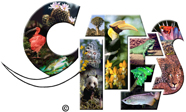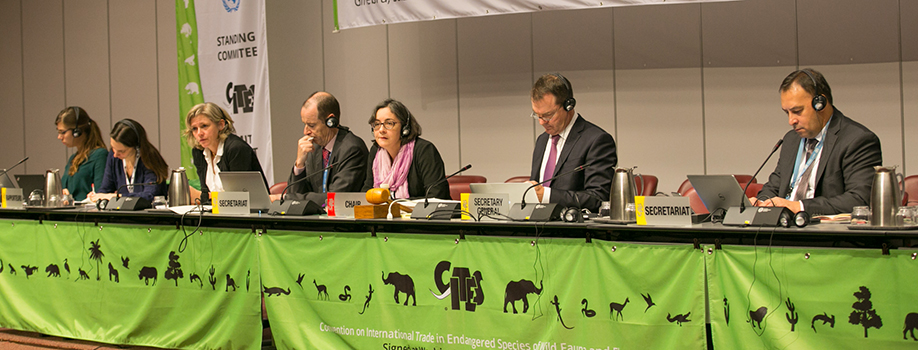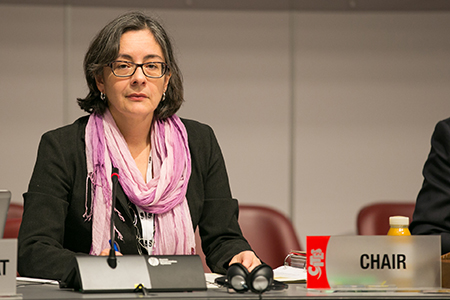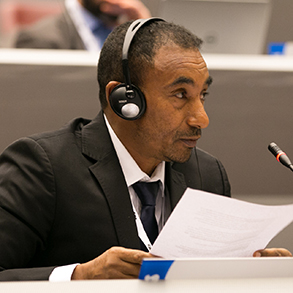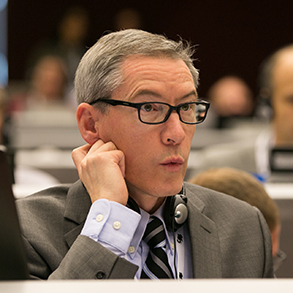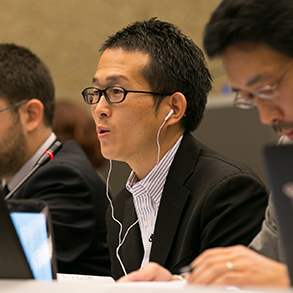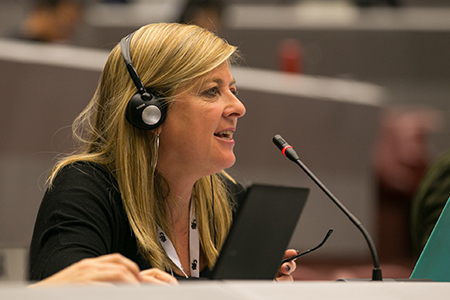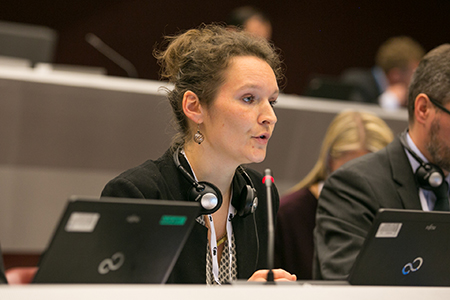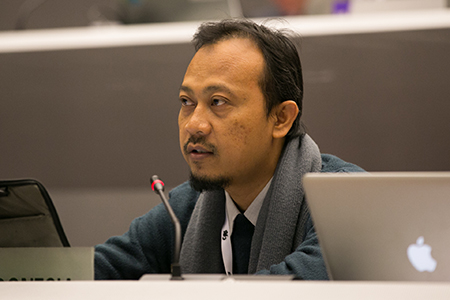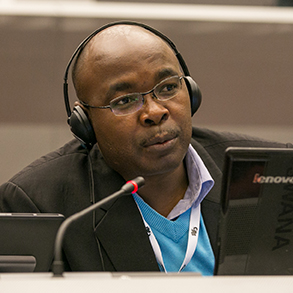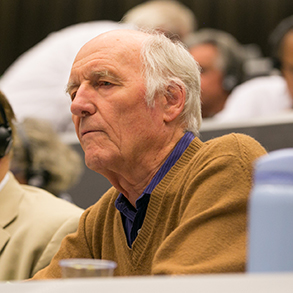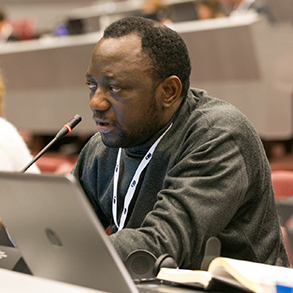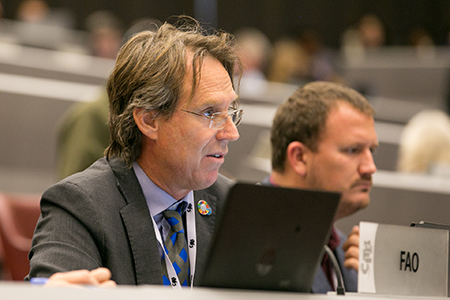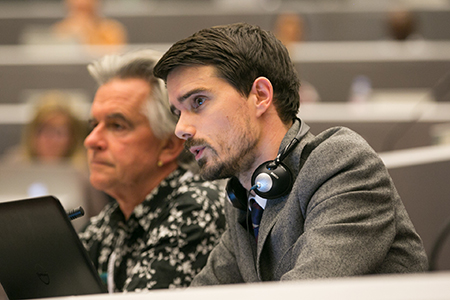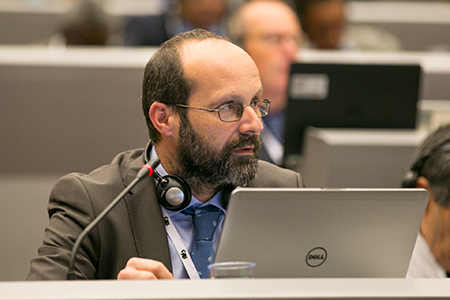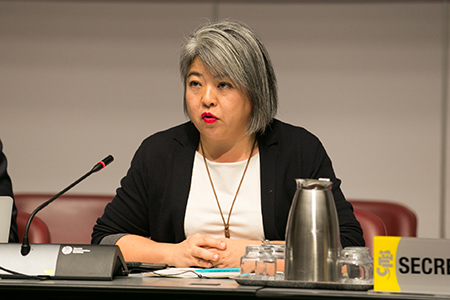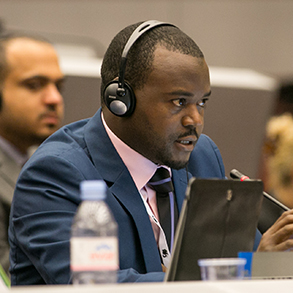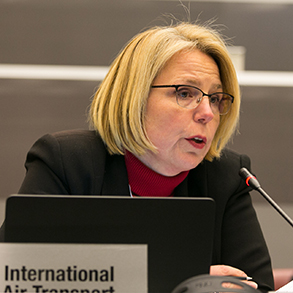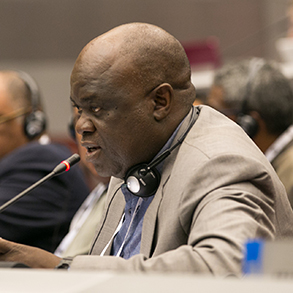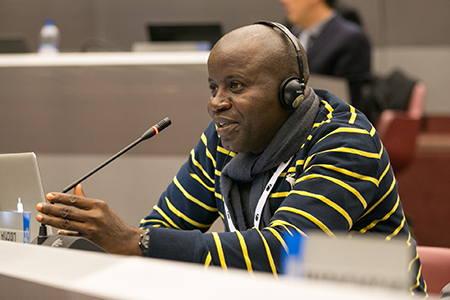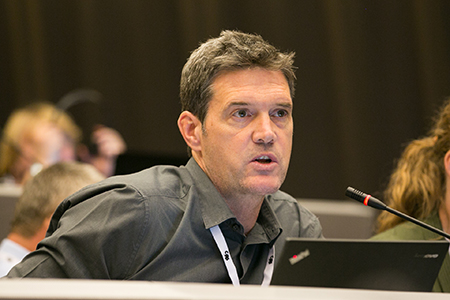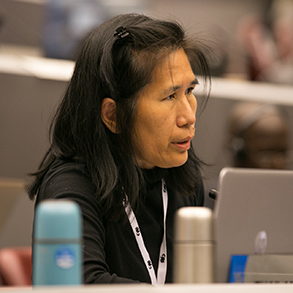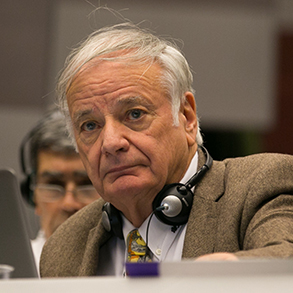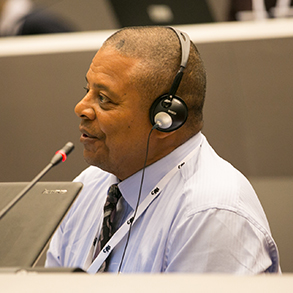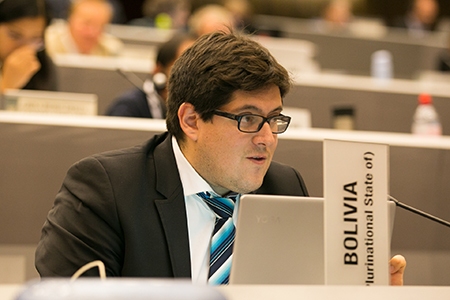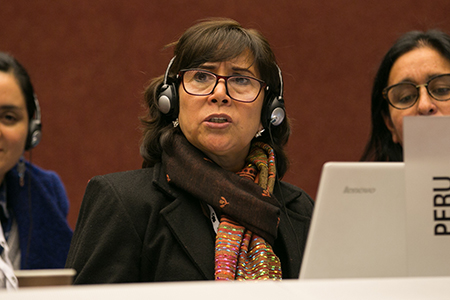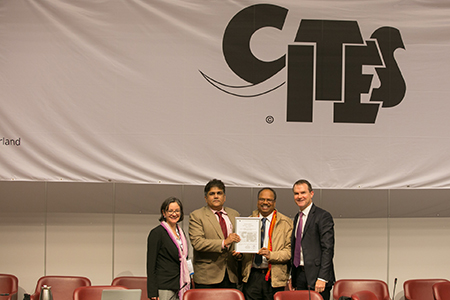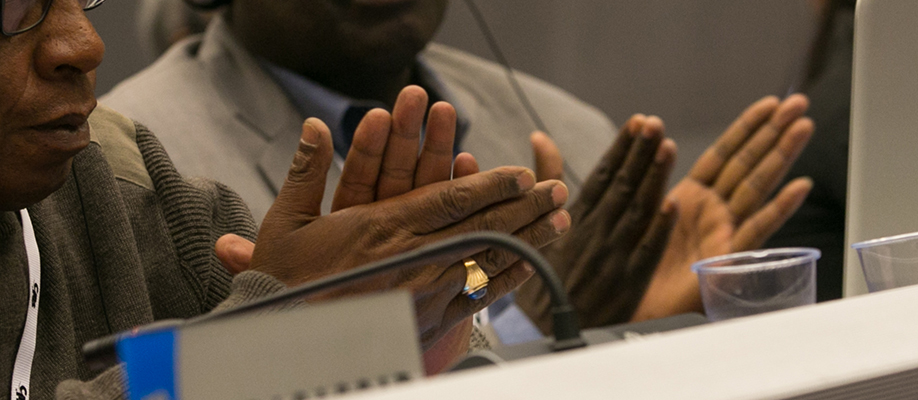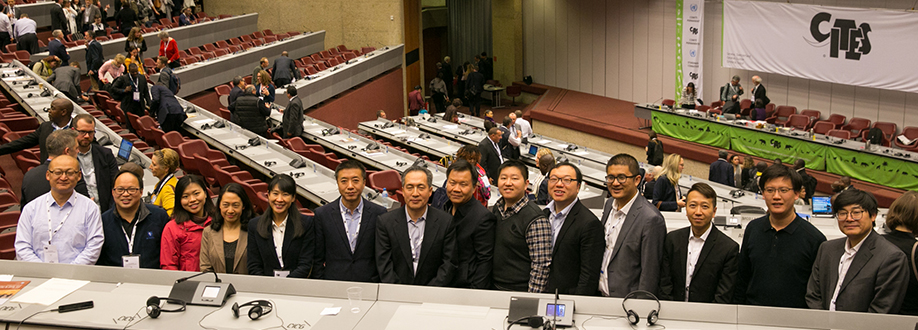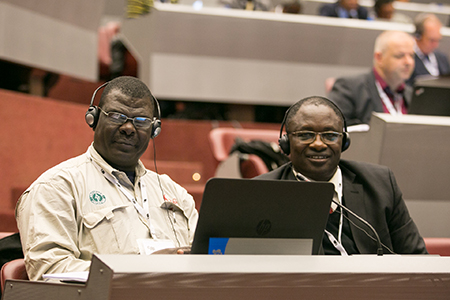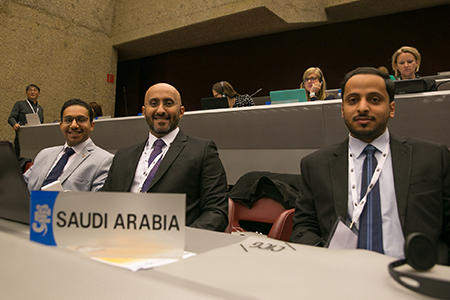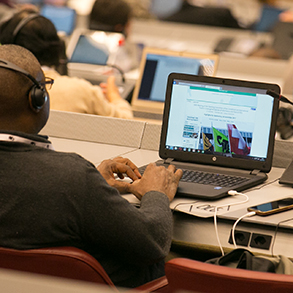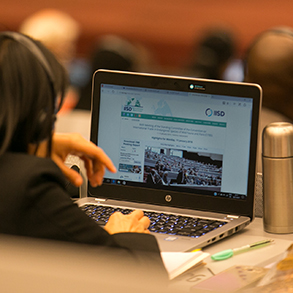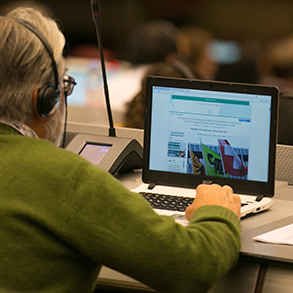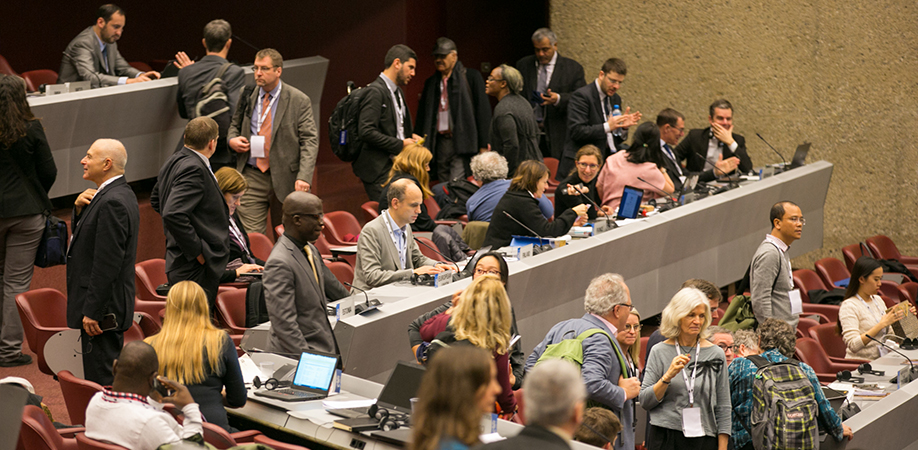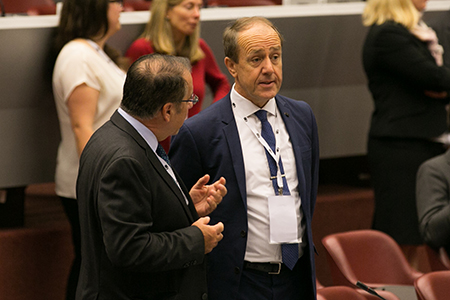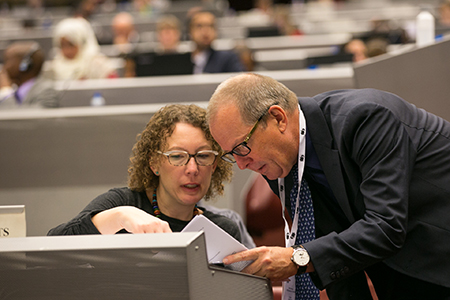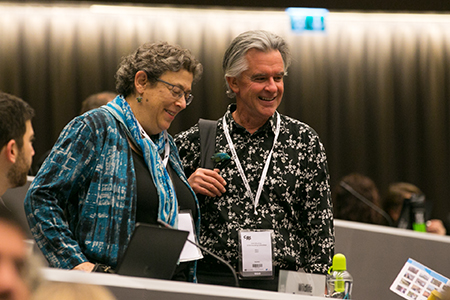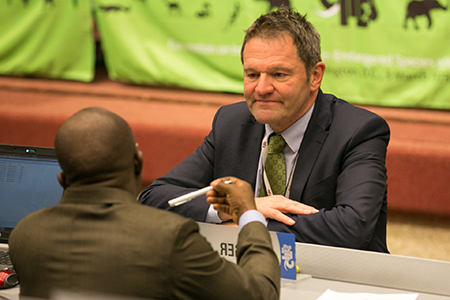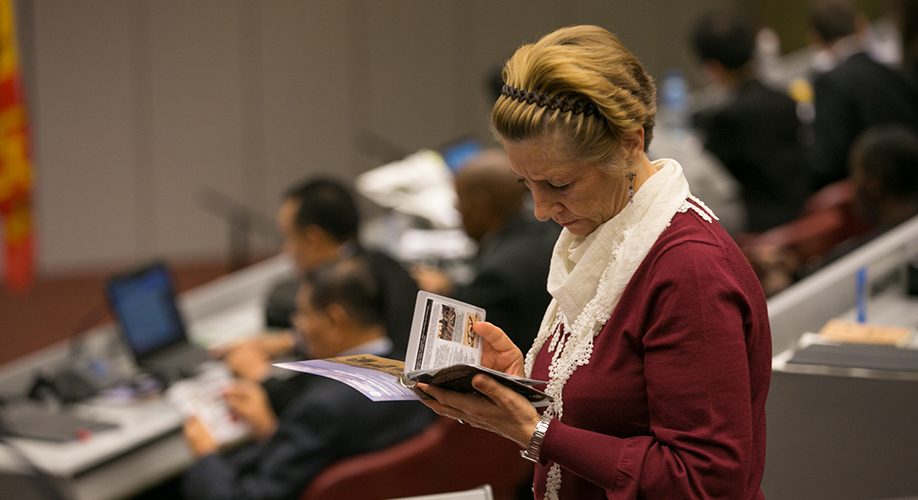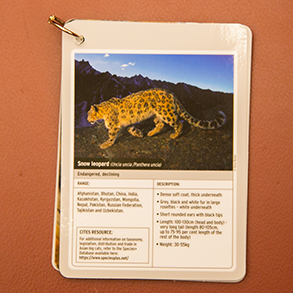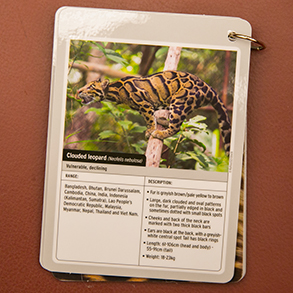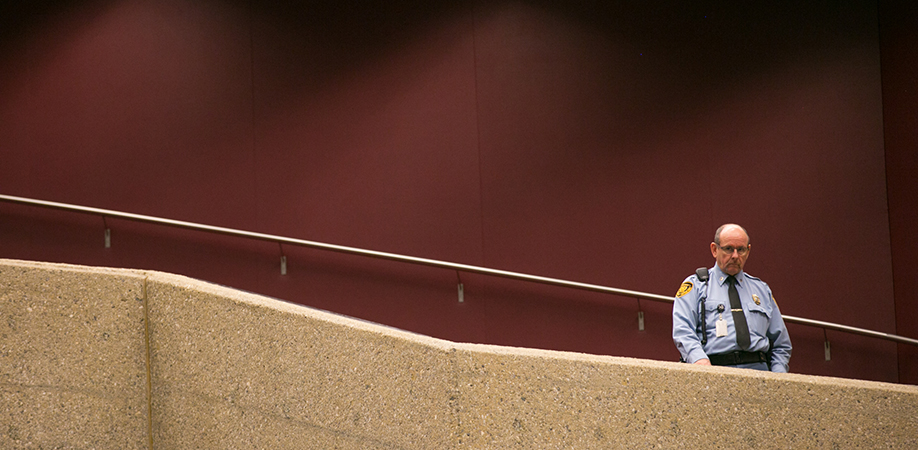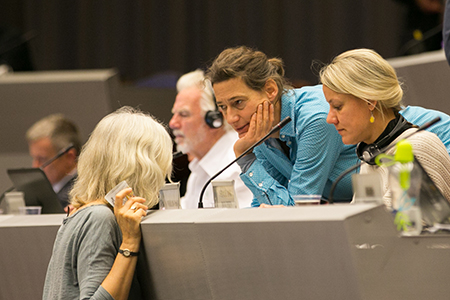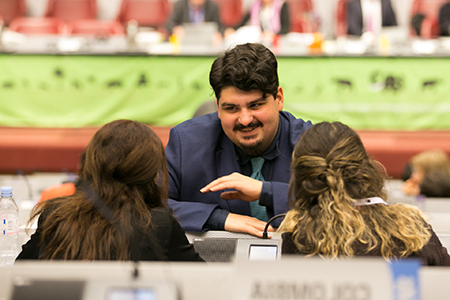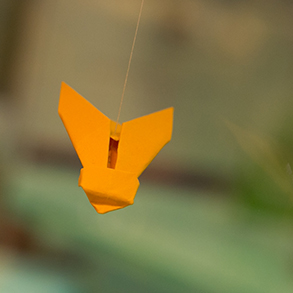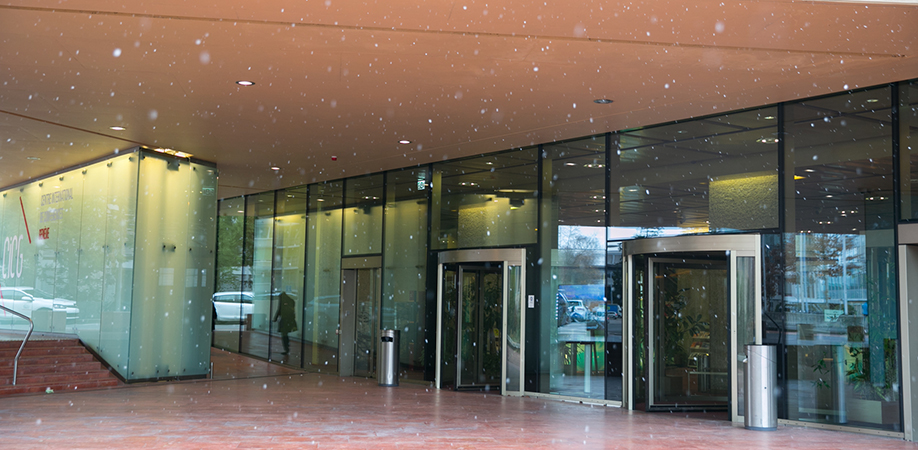Summary
On Thursday, participants reconvened in Geneva for the fourth day of the 69th meeting of the CITES Standing Committee (CITES SC69). When not meeting in in-session working groups, parties worked in plenary to tackle outstanding agenda items, including: cooperation with other biodiversity related conventions; review of the resolution on consideration of proposals for the transfer of the African elephant from Appendix I to Appendix II; and cooperation under the 2006 Memorandum of Understanding (MoU) between CITES and the Food and Agriculture Organization of the UN (FAO), with special reference to the scientific and technical evaluation of listing proposals for commercially exploited aquatic species.
In deliberations on marine species listings, Secretary-General Scanlon outlined cooperative work between the FAO and the Secretariat, as well as close work with Regional Fisheries Management Organizations (RFMOs), highlighting the “collegiality” as well as “breadth and depth” of the FAO-CITES relationship. During the day, the SC addressed the difficulties the Secretariat has faced in determining which of multiple authorities claiming to be Management Authorities in a party is authorized to communicate with other parties and with the Secretariat and represent a party at CITES meetings. On the implementation of the Convention, participants underscored that adequate national legislation is critical for regulating legal trade and combating illegal trade. SC69 also considered, among other issues, illegal trade in eels, rosewood timber species, and tortoises and freshwater turtles.
IISD Reporting Services, through its Earth Negotiations Bulletin (ENB) Meeting Coverage, has provided daily web coverage, and a summary and analysis report from the 69th Meeting of the CITES Standing Committee. The summary and analysis is available in HTML and PDF.
Photos by IISD/ENB | Kiara Worth
For photo reprint permissions, please follow instructions at our Attribution Regulations for Meeting Photo Usage Page.
Morning Plenary
View of the dais during morning plenary
Carolina Caceres, Standing Committee (SC) Chair, Canada
John Scanlon, Secretary-General, CITES
Kumara Wakjira, Ethiopia
Craig Hoover, US
Hirohide Matsushima, Japan
Vanesa Tossenberger, Argentina
Solomon Kyalo, Kenya
Hélène Perier, EU
Firdaus Agung, Indonesia
Abednico Leano Macheme, Botswana
Jaques Berney, IWMC World Conservation Trust
Augustin Ngumbi Amuri, Democratic Republic of the Congo
Kim Friedman, Food and Agriculture Organization of the UN (FAO)
Dan Challender, International Union for Conservation of Nature (IUCN)
Afternoon Plenary
View of the dais during afternoon plenary
Levente Kőrösi, Hungary
Haruko Okusu, CITES Secretariat
Charles Tumwesigye, Uganda
Andrea Gruber, International Air Transport Association (IATA)
Chizamsoka Manda, Malawi
María Elena Sánchez Saldaña, Species Survival Network (SSN)
Blamah Sando Goll, Liberia
Rob Parry-Jones, WWF International
Nunes Tómas Mazivile, Mozambique
Jintana Nugranad, Thailand
Bill Clark, Israel
Maurice Isaacs, the Bahamas
Fernando Escobar Pacheco, Bolivia
Sara Yalle Paredes, Peru
Soumitra Dasgupta and Debabrata Swain, India, receive an award for “Operation Save Kurma,”
one of the largest seizures of live tortoises and turtles in South Asia to date
Delegates applaud India for their achievements
Around the Venue
Delegates from China
Delegates from Chad
Delegates from Saudi Arabia
Delegates read the International Institute for Sustainable Development (IISD) Earth Negotiations Bulletin (ENB) website
Francisco Rilla, UN Environment Programme (UNEP), speaks with Øystein Størkersen, Norway
Adrianne Sinclair, Canada, Chair of Plants Committee, consults with Mathias Lörtscher, Switzerland, Chair of the Animals Committee
Susan Lieberman, Wildlife Conservation Society (WCS), and Glenn Sant, TRAFFIC
Tom De Meulenaer, CITES Secretariat, speaks with Ali Laouel Abbagana, Niger
A delegate from Spain reads the CITES guide for law enforcement agencies to combat illegal trade of Asian big cats
Delegates between sessions
Snowfall outside the venue
